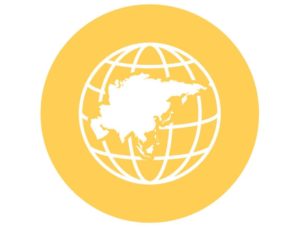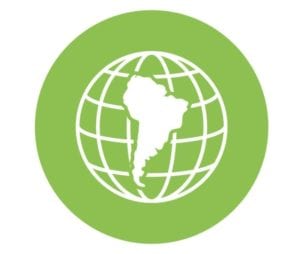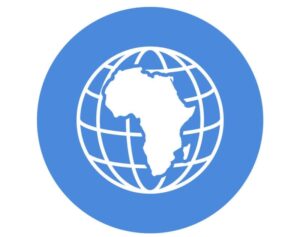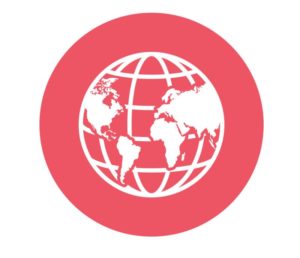June is Border Control & National ID Month at FindBiometrics, in which we are examining the biggest, most ambitious identity tech deployments around the globe as they develop and protect the  nations of the world. Last week we looked at the ways that a multimodal approach to border control is best suited to serve the international community in terms of convenience and security. This week, we’re turning our gaze from the technology securing our borders to the programs building them up from the inside.
nations of the world. Last week we looked at the ways that a multimodal approach to border control is best suited to serve the international community in terms of convenience and security. This week, we’re turning our gaze from the technology securing our borders to the programs building them up from the inside.
Biometric national ID systems are massive in scope and tailored to fit the needs of whichever country they are serving. All around the world, biometric registries are keeping track of citizens and enabling the essential services that come along with verifiable identity. To help illustrate the different ways national ID has sprung up around the world, we’ve compiled a list of four unique deployments of the technology using biometrics.
Register now for the webinar: Biometrics and the New Era of National Security and Border Control
-
Aadhaar and the Biometric Citizen
 India has the monolith of biometric national ID programs that makes for the easiest example. With over one billion citizens biometrically registered the UIDAI’s Aadhaar program, India has become a biometric nation. Aadhaar is being leveraged across multiple aspects of daily life in India in order to keep everything running smoothly, provide the previously underserved with government services, and prevent corruption from springing up.
India has the monolith of biometric national ID programs that makes for the easiest example. With over one billion citizens biometrically registered the UIDAI’s Aadhaar program, India has become a biometric nation. Aadhaar is being leveraged across multiple aspects of daily life in India in order to keep everything running smoothly, provide the previously underserved with government services, and prevent corruption from springing up.
Biometric time and attendance has been deployed in government offices, using Aadhaar ID to ensure workers are showing up to the job. The system has also been invoked to prevent cheating on standardized tests, and to enable digital financial services. The biometric database holds so much potential as an ID verification method that telecoms are seeking to be given access to Aadhaar for customer registration purposes.
The Indian national ID program can also be seen as exemplary in terms of maturity, having to deal with registration of new generations. Recently we reported on an enrollment method for younger citizens being promoted in the country: Aadhaar camps in which children can be registered in the database.
-
Chile and the No-Database ID
 Not all national ID programs depend on a centralized database of biometrics. In fact, some might point to a remote bank of biometric data as a security liability. In today’s age of high profile data breaches, including the OPM hack from last year which saw the compromise of fingerprints belonging to US citizens, it’s tempting to go the on-device route even in matters of national ID. That’s what’s making Chile stand out in terms of national ID programs, with its citizen cards storing the biometric on board rather than on a server.
Not all national ID programs depend on a centralized database of biometrics. In fact, some might point to a remote bank of biometric data as a security liability. In today’s age of high profile data breaches, including the OPM hack from last year which saw the compromise of fingerprints belonging to US citizens, it’s tempting to go the on-device route even in matters of national ID. That’s what’s making Chile stand out in terms of national ID programs, with its citizen cards storing the biometric on board rather than on a server.
TOC Biometrics is the company behind the cards, and as the on-device philosophy might lead you to conclude, it is the first Latin American member of the FIDO Alliance.
“We don’t need a database as we don’t store the fingerprint,” explained TOC CEO Ricardo Navarro in a recent FindBiometrics interview. “Each citizen or foreign resident comes with his documents and we read those and then compare it with the reading of his fingerprint. So that is how we manage to do this non database biometric system.”
-
National ID Versus Terrorism In Nigeria
 While national ID is often associated the most with cutting down on fraud and providing citizens with essential services, it can be used as a national security tool as well. In Nigeria, biometric registries are used for the usual reasons, cashless banking, mobile registration, and government services. But going a step beyond the “I’M Alive” program in Lagos, which uses fingerprints of pensioners to ensure they are the ones receiving their government checks, national ID has also been suggested as a way to fight terrorism in the region.
While national ID is often associated the most with cutting down on fraud and providing citizens with essential services, it can be used as a national security tool as well. In Nigeria, biometric registries are used for the usual reasons, cashless banking, mobile registration, and government services. But going a step beyond the “I’M Alive” program in Lagos, which uses fingerprints of pensioners to ensure they are the ones receiving their government checks, national ID has also been suggested as a way to fight terrorism in the region.
In 2015, Nigeria’s aviation minister, Osita Chicoda, unveiled plans to use a biometric citizen database in the fight against the Boko Haram terrorist organization. Nigeria’s various government organizations don’t share biometric data, despite multiple calls by rulers for a centralized database managed by the National Population Commission. As such, the plan would require the registering of 173 million citizens. And it would be worth the effort if it could help protect Nigerians from ongoing political conflict.
At the time, Chicoda explained the initiative to The Telegraph: “The president has realised that as much as we are going to fight militarily, we need to introduce the systems of modernity that will fight global networks of terror. Then we will also know if these people fighting in our country are really Nigerians. Right now we don’t.”
-
National ID For The Un-Nationed
 Identity is valuable, and thanks to biometric national ID a great deal of people around the world who were once undocumented can now benefit from access to what ought to be their basic human right. But when a person is left without a country to call home, displaced for reasons of political turmoil, persecution, or war, they often find themselves among refugee camps, speaking a language foreign to their host country, and without any way of proving who they are. Thankfully, biometrics can help here, too.
Identity is valuable, and thanks to biometric national ID a great deal of people around the world who were once undocumented can now benefit from access to what ought to be their basic human right. But when a person is left without a country to call home, displaced for reasons of political turmoil, persecution, or war, they often find themselves among refugee camps, speaking a language foreign to their host country, and without any way of proving who they are. Thankfully, biometrics can help here, too.
According to the UNHCR’s 2015 Global Trends report, 59.9 million persons worldwide were counted as being forcibly displaced. If they were to be counted as a nation, the displaced would rank as the 24th largest country in the world. 19.5 million people of that un-nation are counted as refugees, and are highly vulnerable to identity theft. In order to protect them, UNHCR completed the development phase of its biometric identity management system (BIMS) last year, and it is already changing the lives of the displaced.
After a successful pilot in Malawi’s Dzaleka Refugee Camp, BIMS has been rolled out in Thailand where it enrolled and issued IDs to 100,000 refugees. After BIMS’ next scheduled deployment in Chad, where the UNHCR intends to enroll 450,000 refugees, the organization plans to have every person in a UN refugee project biometrically enrolled.
*
Stay posted to FindBiometrics throughout June as we continue to examine the role of biometrics in border control and national ID. Be sure to follow us on Twitter and sign up for our upcoming webinar, Biometrics and the New Era of National Security and Border Control.
National ID and Border Control Month is made possible by our sponsors MorphoTrak and NEC Corporation of America.
—
June 15, 2016 – by Peter B. Counter


Follow Us